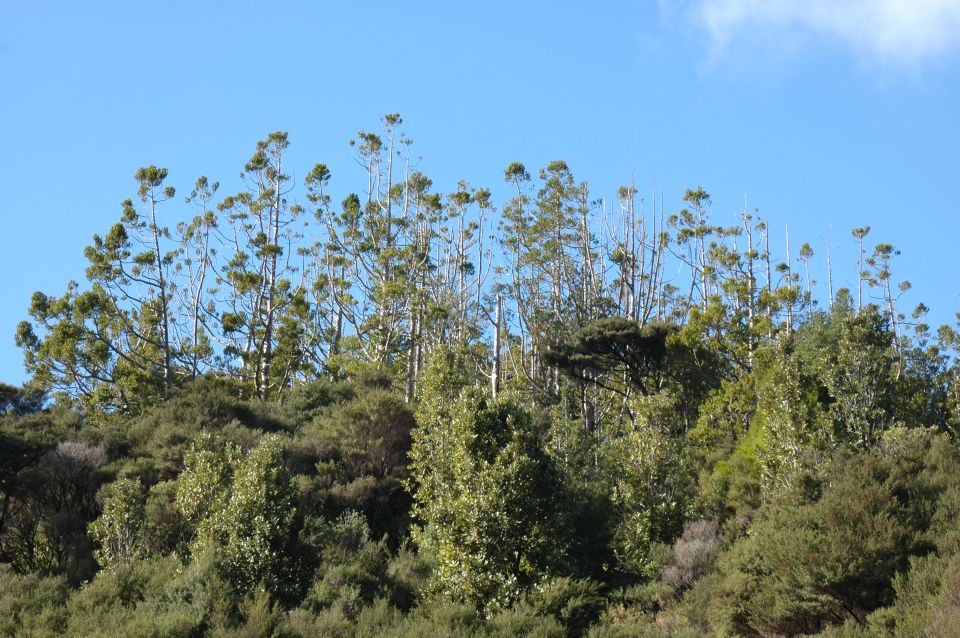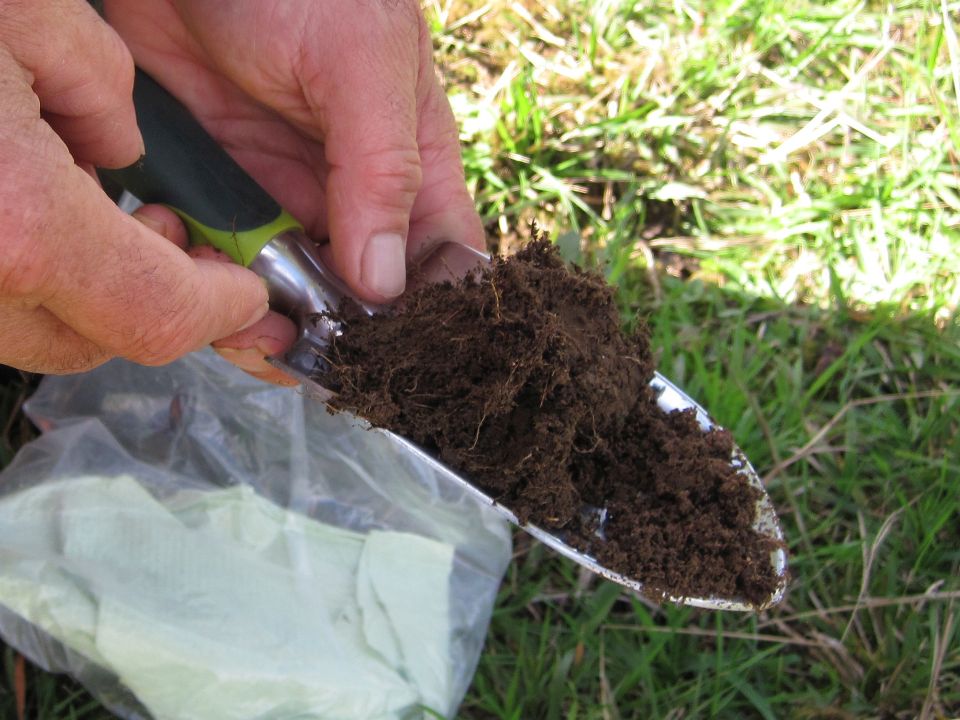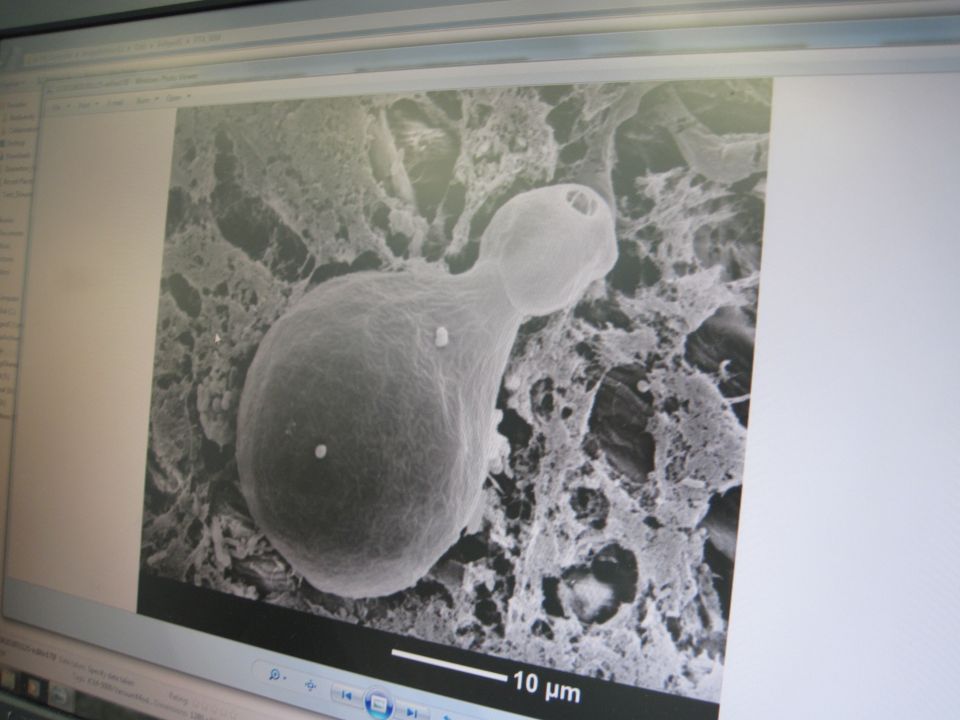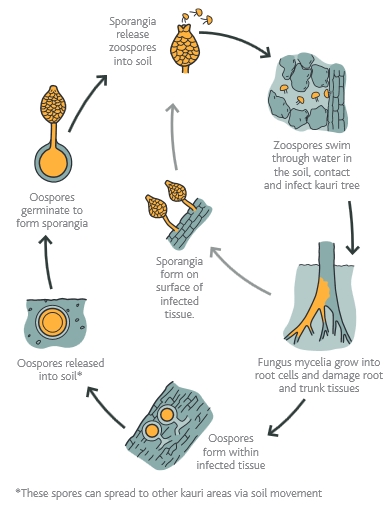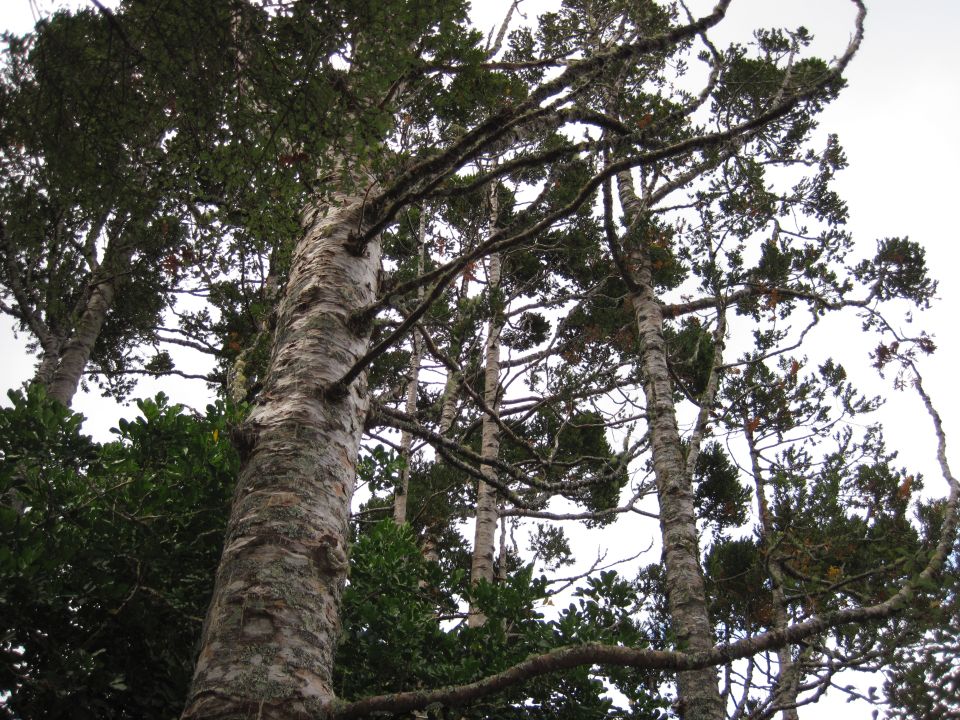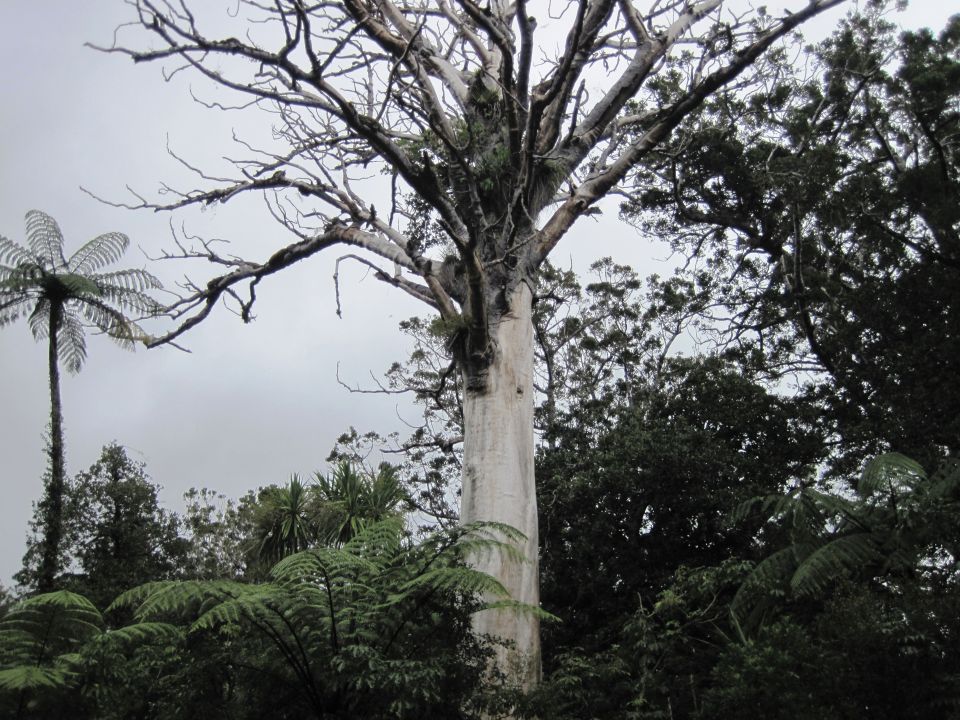What is kauri dieback?
Kauri dieback is a microscopic, fungus-like disease. It only affects New Zealand kauri. It can kill trees and seedlings of all ages. Nearly all infected kauri die. Kauri dieback has killed thousands of kauri in New Zealand over the past 10 years.
Soil microbes
All life on earth needs soil. It has many important jobs in our ecosystem. Soil is made by erosion, weathering, and soil microbes that break down dead plants and animals.
Microbes are tiny living organisms that can’t be seen with the naked eye. There are three main types of microbe:
- viruses
- bacteria
- fungi
Some microbes are harmful, like the flu which can kill people. Others types of microbes can be helpful, like yeast which is an important part of making bread. Leaves and plants would pile up around us without soil microbes like bacteria and fungi.

Not actually a fungus
The soil microbe causing kauri dieback disease belongs to the Phytophthora (fy-tof-thora) genus of water moulds (or oomycetes - oh-uh-may-seets). So it is not actually a true fungus.
Phytophthora is a Greek word meaning ‘plant destroyer’. Phytophthora species cause plant disease in both crops and natural environments. Kauri dieback is also known as Phytophthora agathidicida (ag-ar-thid-dis-cid-da) or PA for short.
Like fungi, water moulds are spread through spores. Spores are a lot like seeds. Spores can spread in soil, water or air. Once it has landed in a new site, the spore will grow and create many more spores.
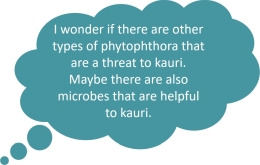
Life cycle
Kauri dieback spores spread in soil (these are called oospores) and in freshwater (these are called zoospores). Kauri dieback does not spread through the air.
Zoospores infect kauri through the roots and “eat away” the tissues in the tree that carry water and nutrients to the leaves. Oospores grow in infected trees. These oospores are released into the soil as the tree dies and starts to rot. Here they can make new zoospores or spread by soil movement.
What does it do to kauri trees?
Kauri dieback infects kauri roots. It damages the small tubes that carry nutrients within the tree. Kauri dieback starves the tree to death because it cannot move water and nutrients from its roots to the leaves.
Kauri trees infected with kauri dieback can show these symptoms:
- Lesions or blobs of gum at the bottom of the trunk.
- Yellow leaves and thinning canopies.
- Dead branches - then death of whole tree.


